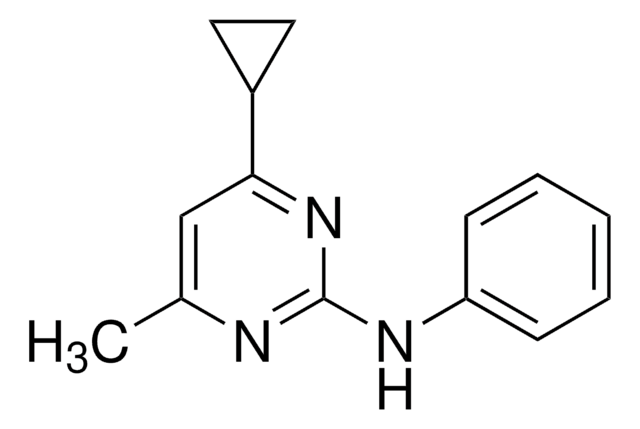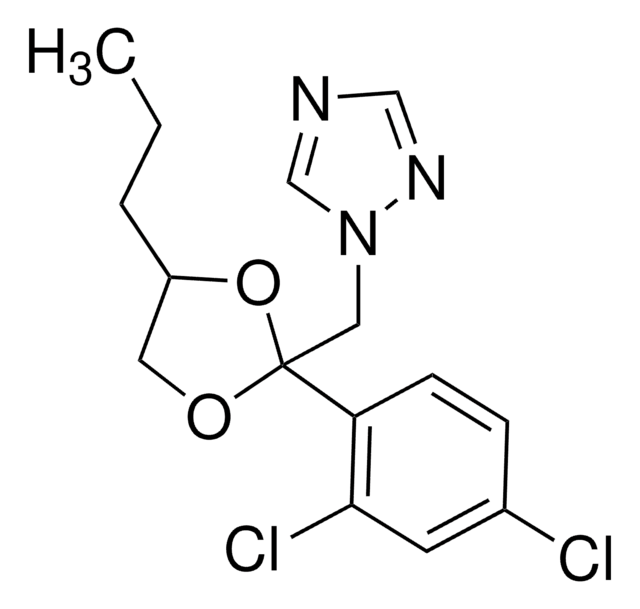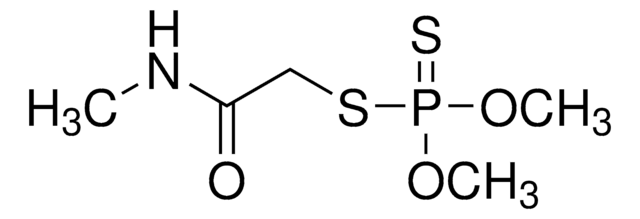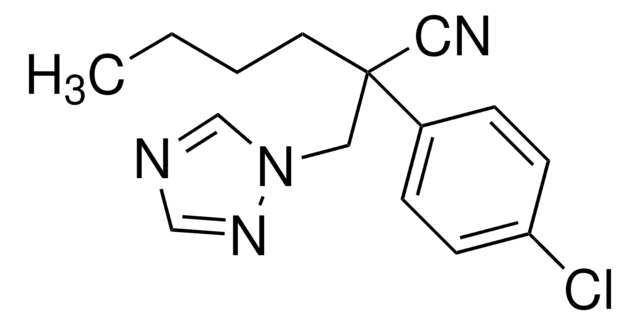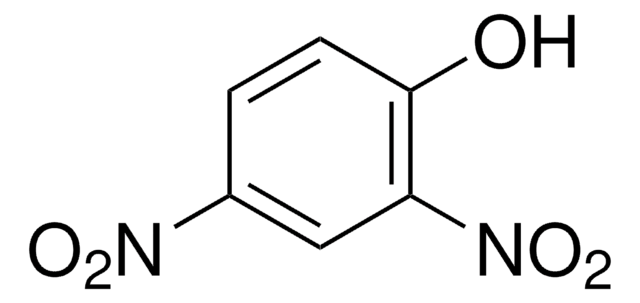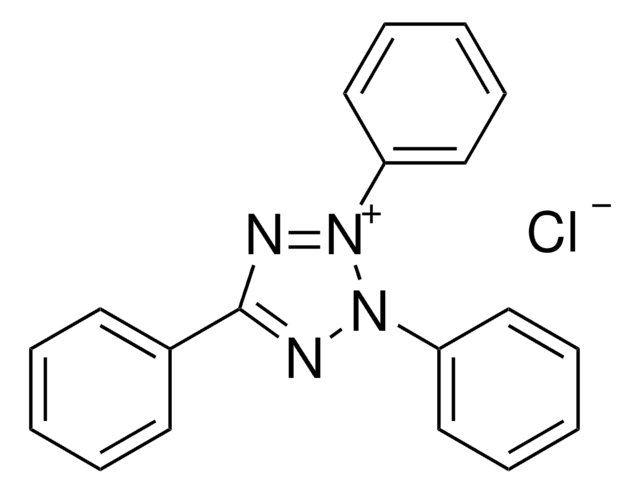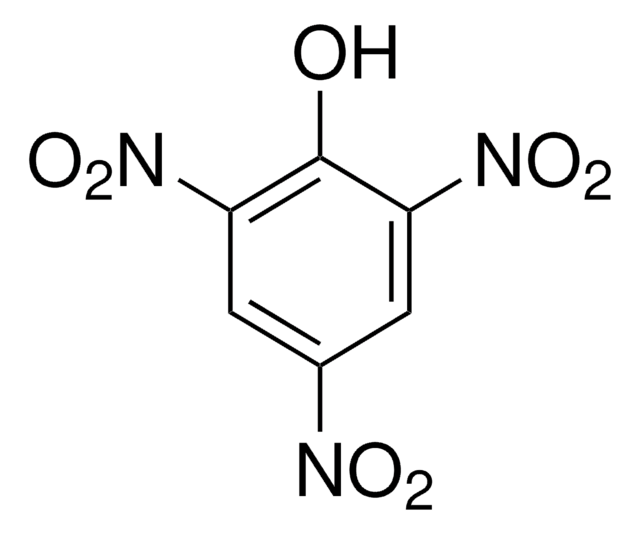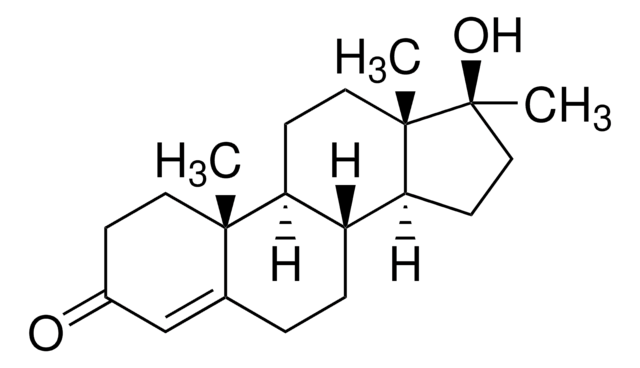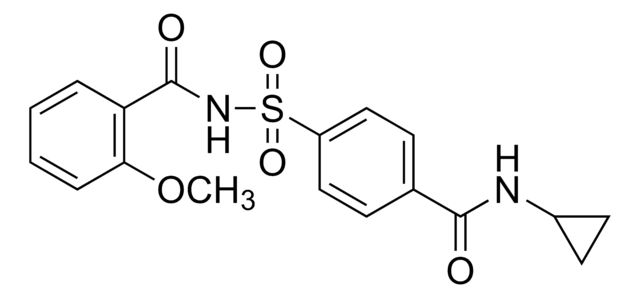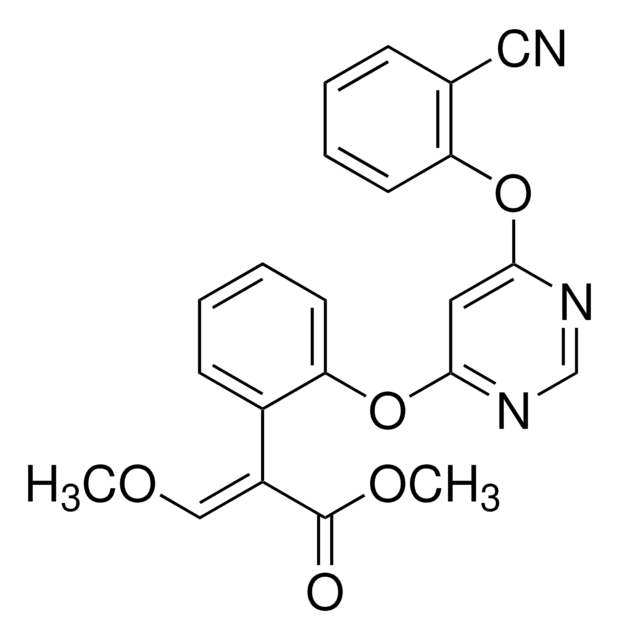About This Item
Recommended Products
grade
analytical standard
Quality Level
product line
PESTANAL®
shelf life
limited shelf life, expiry date on the label
technique(s)
HPLC: suitable
gas chromatography (GC): suitable
application(s)
agriculture
cleaning products
cosmetics
environmental
food and beverages
personal care
format
neat
SMILES string
OC(c1ccc(Cl)cc1)(c2cncnc2)c3ccccc3Cl
InChI
1S/C17H12Cl2N2O/c18-14-7-5-12(6-8-14)17(22,13-9-20-11-21-10-13)15-3-1-2-4-16(15)19/h1-11,22H
InChI key
NHOWDZOIZKMVAI-UHFFFAOYSA-N
Looking for similar products? Visit Product Comparison Guide
General description
Application
- Honeys, honeybees and pollens by QuEChERS extraction followed by analysis using liquid chromatography-electrospray ionization-tandem mass spectrometry (LC-ESI-LC-MS/MS) combined with multiple reaction monitoring (MRM) detection.
- Grapes by ethyl acetate extraction, dispersive solid phase extraction (d-SPE) clean-up and LC-ESI-MS/MS with MRM detection.
- Fruit-based baby food samples by programmed temperature vaporizer injection-low pressure gas chromatography coupled with high resolution time-of-flight mass spectrometry (PTV-LP-GC-HR-TOF-MS).
- Foodstuffs by capillary GC-MS equipped with electron impact (EI) mode of ionization.
- Soya grain samples by LC-ESI-MS/MS.
Legal Information
signalword
Warning
hcodes
Hazard Classifications
Aquatic Chronic 2 - Lact. - Repr. 2
Storage Class
11 - Combustible Solids
wgk_germany
WGK 2
flash_point_f
212.0 °F - closed cup
flash_point_c
100 °C - closed cup
ppe
Eyeshields, Gloves, type P3 (EN 143) respirator cartridges
Choose from one of the most recent versions:
Certificates of Analysis (COA)
Don't see the Right Version?
If you require a particular version, you can look up a specific certificate by the Lot or Batch number.
Already Own This Product?
Find documentation for the products that you have recently purchased in the Document Library.
Customers Also Viewed
Our team of scientists has experience in all areas of research including Life Science, Material Science, Chemical Synthesis, Chromatography, Analytical and many others.
Contact Technical Service